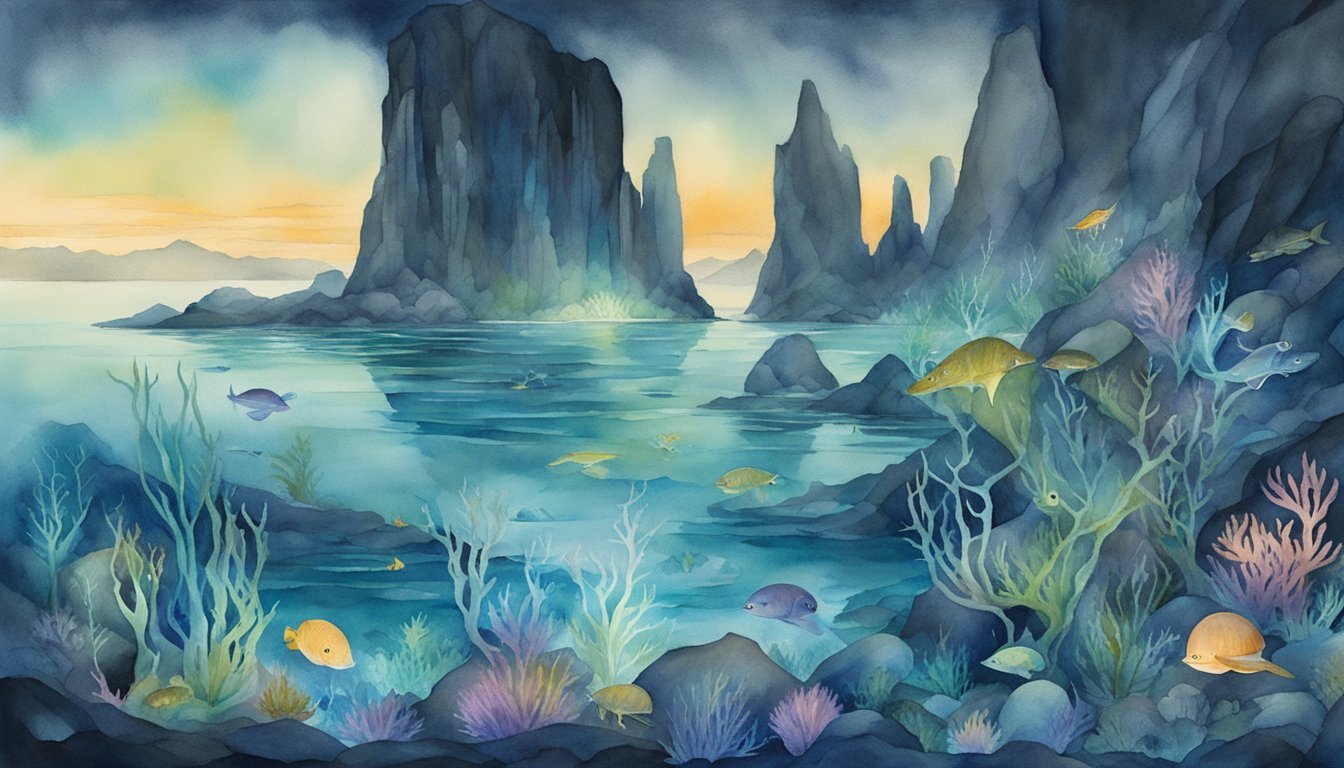Mariana Trench: The Deepest of the Deep
The Mariana Trench, located in the Pacific Ocean, lays claim to the deepest point on Earth known as the Challenger Deep. This extraordinary underwater canyon is notable not only for its profound depths but also as a site of pivotal oceanographic research and historic expeditions.
Geographical Context
The Mariana Trench is situated approximately 200 kilometers east of the Mariana Islands and near Guam. Its crescent-shaped scar on the Earth’s crust spans 2,550 kilometers in length and about 69 kilometers in width. The Challenger Deep represents the trench’s lowest point, whose depth surpasses 10,900 meters, making it a significant point of interest for scientists and explorers alike.
Historical Expeditions
Historically, the Mariana Trench has been a focal point for deep-sea exploration. The first manned descent was made in 1960 by the bathyscaphe Trieste, which carried Jacques Piccard and Don Walsh. Decades later, in 2012, film director and explorer James Cameron piloted the Deepsea Challenger to the Challenger Deep. More recently, the Five Deeps Expedition made headlines as it systematically descended into the five deepest points of the world’s oceans.
Oceanographic Research
Research in the Mariana Trench is pivotal for understanding deep-sea environments. Institutions like the National Oceanic and Atmospheric Administration (NOAA) and the Woods Hole Oceanographic Institution have been at the forefront of scientific endeavors in the area. These and other entities investigate the trench’s unique pressure conditions, marine life, and geological features, contributing valuable insights into the planet’s largely unexplored oceanic depths.
Life and Conditions in the Depths

Exploring the deepest parts of the ocean unveils a unique ecosystem thriving under extreme pressure and minimal light. This environment, while hostile to surface-dwelling life, is home to a variety of organisms specifically adapted to these conditions.
Biology and Ecosystem
The Mariana Trench, reaching depths exceeding 36,000 feet, is host to an extraordinary array of life. Despite the scarcity of light, species such as foraminifera, small amphipods, and sea cucumbers manage to exist. Many of these organisms feed on marine snow, organic debris that drifts down from the upper layers of the water column. In the utter darkness, some species have evolved bioluminescence, a biological light, for communication and hunting.
Microbial life flourishes through chemosynthesis, a process where bacteria convert chemicals like hydrogen sulfide into energy, in absence of sunlight. These microbes form the base of a unique food web, supporting a community of diverse marine life including various fish species. The recent discovery of life, including a type of fish residing in the deepest realms of the trench, demonstrates the adaptability of life forms under the most extreme conditions.
Physical Conditions and Challenges
As one descends through the water column, the conditions change drastically. For every 10 meters in depth, the water pressure increases by approximately 14.5 pounds per square inch. At the deepest part of the ocean, the pressure exerted can be over a thousand times the atmospheric pressure at sea level. Organisms here have developed special adaptations to withstand such immense pressure.
Temperature at these depths can be near freezing, with the average temperature around 1 to 4 degrees Celsius. The complete lack of sunlight and the cold temperature result in a slow rate of biological processes. Oceanic trenches represent the deepest points of the sea bed and form unique habitats that pose significant challenges for exploration and study. Research into these environments often reveals new [species](https://www.npr.org/sections/thetwo-way/2014/12/25/372894314/unexpected-life-found-in-the-oceans-deepest-trench) and biological phenomena, expanding our understanding of life’s resilience.

